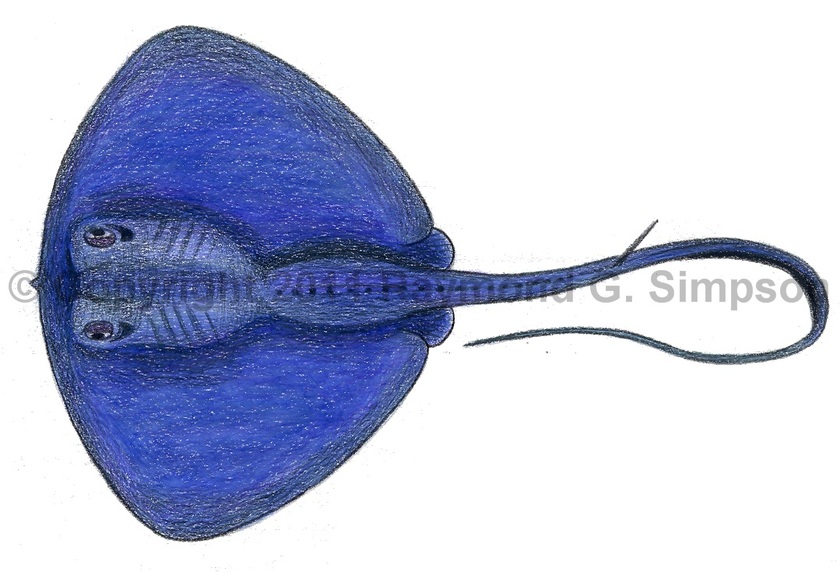
Common Name
Pelagic Stingray
Year Described
Bonaparte, 1832
Identification
A short-snouted species of stingray with a very broad, robust, rhomboidal disk. Snout rounded. Eyes and spiracle very small. Tips of pectoral fins angular (not rounded). Mouth tiny. Pre-orbital length much shorter than distance between the spiracles, with straight to convex margins of snout. The dorsal surface is almost entirely devoid of denticles except for a single row on the dorsal midline. Dorsal finflap vestigial and ventral tailflaps well developed. Tail moderate (>2 times DW) with tip highly filamentous. Tail spine further back on tail than relatives. Pelvic fins protrude well beyond disk.
Color
Dorsum varies from dark gray to indigo blue. Underside dark to light gray.
Size
Maximum size to 80cm DW.
Habitat
The only western Atlantic stingray that is largely pelagic and lives in the open ocean. Mostly captured near the surface but can be taken at the bottom to depths of 250m.
Range
Eastern United States to Brazil.
References
Last, P. R., Naylor, G. J. P., & Manjaji-Matsumoto, B. M. 2016. A revised classification of the family Dasyatidae (Chondrichthyes: Myliobatiformes) based on new morphological and molecular insights. Zootaxa, 4139 (3): 345-368.
Other Notes
Retained in this genus or lumped into Bathytoshia, but not a Dasyatis according to Last et al. (2016).